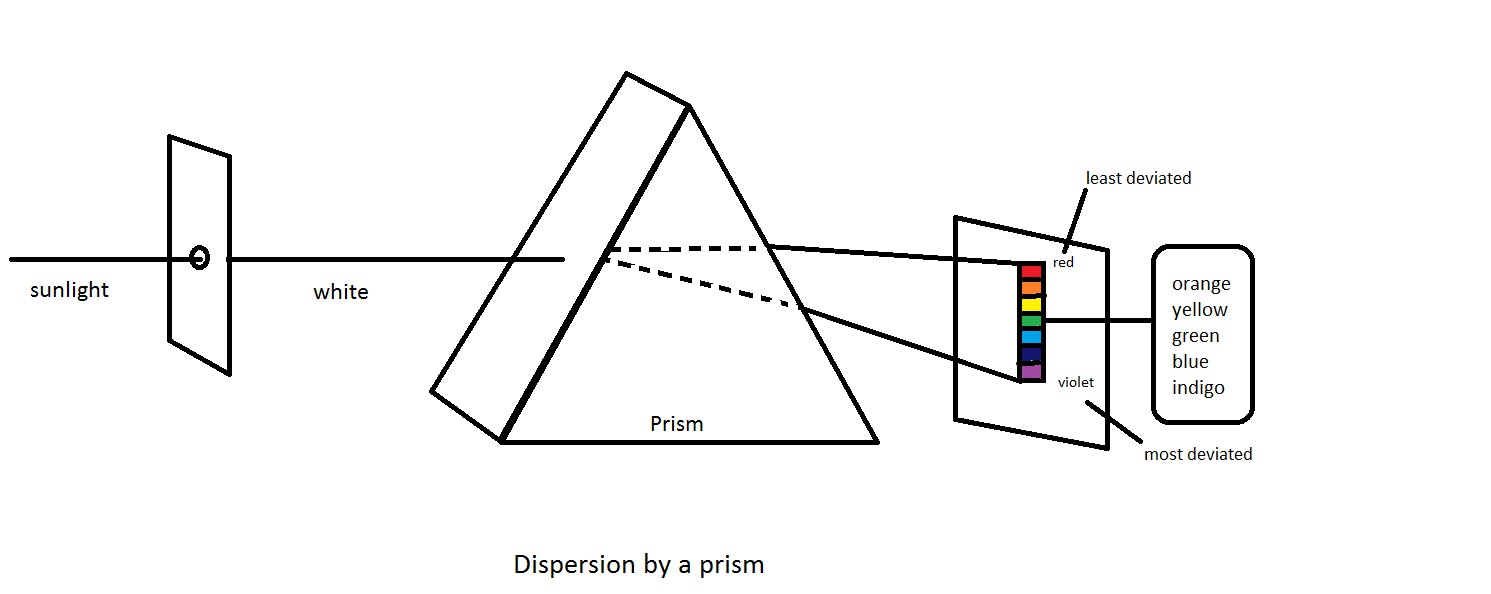
The dispersion of light is the phenomenon of splitting of a beam of white light into its seven constituent colours when passed through a transparent medium. It was discovered by Isaac Newton in 1666. Newton discovered that light is made up of seven different colours. He passed a beam of sunlight through a glass prism. The glass prism split the light into a band of seven colours on his wall. He called this band of colours the 'spectrum'. Thus the spectrum is a band of seven colours which is obtained by splitting of white light by a glass prism. The order of colours from the lower end of spectrum is violet (V), indigo (I), blue (B), green (G), yellow (Y), orange (O), and red (R). The sequence of the 7 colours so obtained in a spectrum can be remembered by using the acronym 'VIBGYOR'.
The cause of dispersion of light is that white light consists of seven different colours, and each colour has different angle of deviation. Therefore, on passing through the prism different colours deviate through different angles. Hence the seven colours of white light separates and form a spectrum. Out of seven colours, the red colour deviates the least, and hence the red colour is present at the top of the spectrum. On the other hand, the violet colour deviates most that is why violet colour is present at the lower end of the spectrum.
The formation of rainbow is based on the process of dispersion of light. It is the most enchanting example of dispersion of light which takes place naturally. Usually a rainbow of seven colours is seen in the sky just after the rain when the Sun is shining. The essential condition to see the rainbow is that the observer must stand with his back towards the sun, when seeing the rainbow. Actually after the rain, a large number of water droplets remain suspended in the atmosphere. These droplets of water function as small prisms. So, when the white light emitted by Sun falls on these water droplets, then the white light is split into seven colours and rainbow is formed.
The download link for the image(the dispersion of light)is below
Source from http://www.funscience.in/Download the image HERE
For more information about the dispersion of light,visit HERE